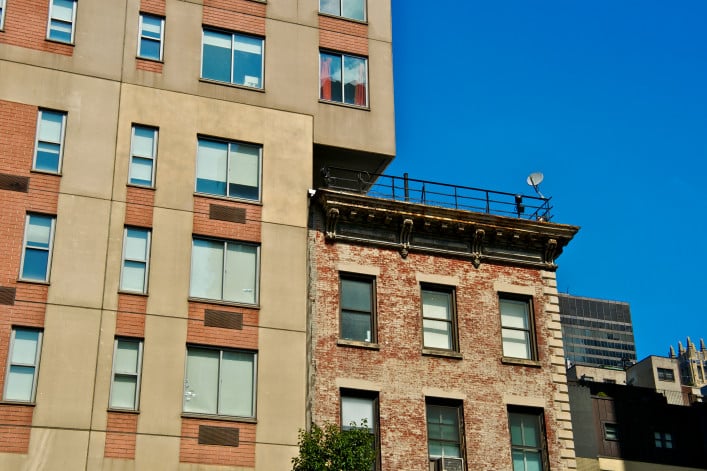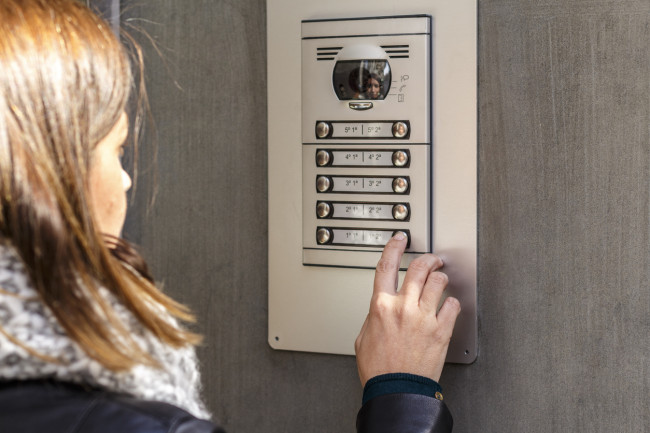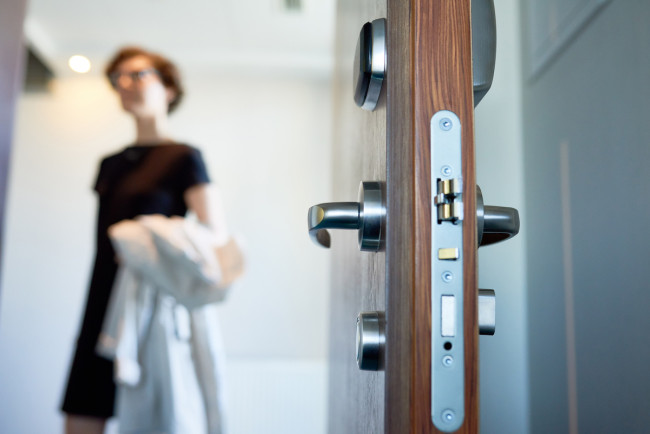Which type of non-doorman building is safer in NYC, a walk-up or one with an elevator?

Walk-up buildings can be close-knit communities with residents that look out for each other, and elevator buildings are typically large and often have more funds for security features.
iStock
Having a doorman or concierge in your New York City apartment building can make your busy life in this crazy city that much easier. These all-seeing, all-knowing staff working in the lobby can not only get the super on speed-dial but arguably act as a deterrent when it comes to crime, for example, if you get packages delivered and don't want them going missing.
If your budget doesn’t fit a doorman building, you might be weighing which type of building is safer, a walk-up or one with an elevator. NYPD does not provide crime statistics this specific, but there are some generalizations about these two types of buildings that can help you evaluate which one will suit you best.
"Elevator buildings typically have more unit-owners contributing maintenance fees and often have funds allocated to maintain extra security measures like surveillance cameras, high-tech video intercom systems and live-in supers," says Teka Barron Klopfenstein, a broker at Compass.
A walk-up, which is typically smaller than an elevator building, might have a more tight-knit community of neighbors looking out for each other, which can help improve safety. However, often that is not enough for some buyers, says Barron Klopfenstein.
"Walk-up buildings typically only have buzzer intercoms, so many parents with adolescent children have major concerns for safety coming and going late in the evening. However, the main concern for residents is managing lost or stolen packages as internet shopping is at an all-time high," she says.
Security consultant Allan Schwartz says, while "it may be a tad safer to have elevators as opposed to a walk-up, you still have vulnerabilities and threats with an elevator building." In either case, you need to consider the safety of the neighborhood as well as the building. Schwartz says "external factors" like street lighting and maintenance, street cleaning, how the neighbors take care of the neighborhood, as well as whether the area is a heavily trafficked truck route, all play a part in building safety.
If you are considering a move to a non-doorman building, here's what to look out for when it comes to crime prevention.
Building perimeter protection
"The first level of protection is the perimeter of the building," says Schwartz. Make sure the exterior door is strong, has a heavy-duty secure lock and there's a functioning intercom system.
Access to buildings is usually through a key, code, or card and it's important tenants are trained in their use. Front door keys should not be duplicated or borrowed.
Ask whether there's an emergency safety manual for the building. If there isn't one, Schwartz recommends residents press for a guide for the welfare of tenants and staff.
"If you don't address threats and vulnerabilities, you don’t know what you want to protect," he says. Burglary, assault, trespassing, vandalism, disorderly conduct, fake solicitors, and fires should be covered as well as evacuation procedures in the event of a fire.
Intercoms come in many different varieties, usually involving a video or a phone system. When you are evaluating the building, make sure you are comfortable with the level of security provided by the intercom system.
Another factor to consider is the design of the exterior door for the building. Schwartz suggests the door should not have a doorknob on the outside. This is because someone who wants to break into the building can wrench off a doorknob and get access to the lock cylinder. Instead, he recommends the exterior lock be "flush [with the door] or stand out no more than a half-inch so it can’t be wrenched off."
The exterior door should also be locked with a deadbolt rather than a simple latch system.
Interior lighting and lock systems
Lighting is "a very strong deterrent" for people wanting to gain unauthorized access to a building, says Schwartz. A walk-up needs adequate lighting on the stairs, so you are not turning a dark corner and finding someone lurking there.
Not only should there be adequate lighting, but the emergency lights needs to be wired into the system, so if the power goes out, the lights stay on.
If the building has a laundry room, or basement storage, look out for additional security devices—such as access control, an intercom, and even panic buttons. As well as being well-lit, the stairs in an elevator building should have these additional safety features and secure fire doors to prevent unauthorized access.
Surveillance systems
Close-circuit TV can act as a deterrent against crime. Schwartz says the advantage of an elevator building is that the elevator may very likely have "vandal-resistant elevator cameras that cannot be taken out or destroyed in advance."
What you're looking for are systems in place to prevent any unauthorized access to the building because, as Schwartz points out, if someone can get into the building, they could wait in the elevator for a tenant or take the elevator to the unattended basement and wait there.
Community involvement or patrols
Since a walk-up is typically smaller, it's comforting to think your neighbors in this type of building will be the eyes and ears that provide an additional level of security, but Schwartz says "relying on neighbors is impractical," unless you want to consider setting up patrols of the building where residents volunteer to check the stairs during evening and nightly shifts. This is also something that could be out-sourced, depending on the cost.
You also want to make sure the management company has a procedure for lost keys or access cards. Schwartz says in the event they are lost the landlord or management company should "not only make you a new key but change the lock, because if you lost your keys in front of the building it's just an invitation [to criminals]."
Apartment safety
Just as the exterior door to the building should be sturdy and secure, so should your interior apartment door. Glass is a problem. "If you want to know who is in the stairwell you have a peephole," says Schwartz. If there's no peephole, make sure there's a door chain so you can open the door and see who is there without giving them access to your apartment.
Schwartz also recommends tenants have their own burglar alarm system. In his view, this is "a simple alarm panel with a front door contact and maybe two or three windows where there may be fire escapes to prevent anyone trying to break in through the windows."
You Might Also Like






























